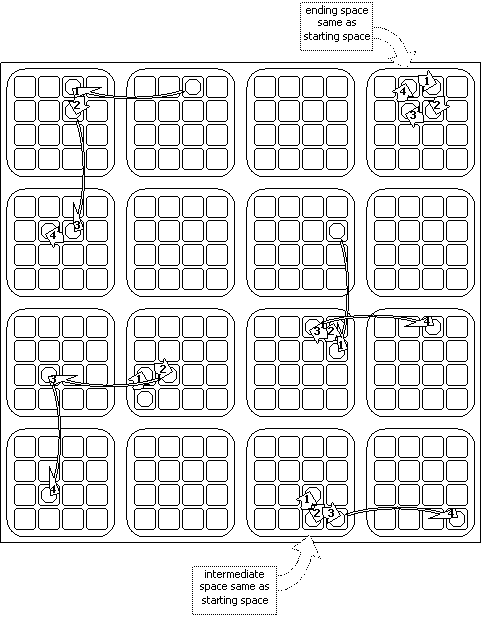A single turn in Tessaron is made up of one or more (up to four) steps.
In the first step, you take up to four pieces from the top of any stack which you control, and move them to any space that is connected to that space, placing them on top of any pieces that are already there. (Although the top piece of the pieces you move must be of your color, the pieces below that may or may not.)
You have the option of making further steps after the first. To make the next step in your turn, take some, but not all, of the pieces you just moved in the previous step, and move them to any space that is connected to the space you are moving from. (This may even be back to the same space you moved from in the previous step.) In other words, for each step after the first, you must leave behind one or more of the pieces you moved in the previous step. In this way, you can make up to four steps per turn, all in a chain of connected spaces.
You should remember that the pieces you leave behind may belong to either you or your opponent. If, in the course of unstacking, you leave your opponent's piece on the top of a stack (or all alone), that piece is released, and free to be moved by your opponent. If a stack that you release to your opponent contains any of your own pieces, then those pieces become captured by your opponent. Because of this, it is wise to unstack cautiously, taking care to leave your opponent's pieces covered with your own.
Examples
To better understand the use of multi-step unstacking turns, it helps to see examples.
The following example illustrates capturing four opponent's pieces with one stack in one four-step turn:
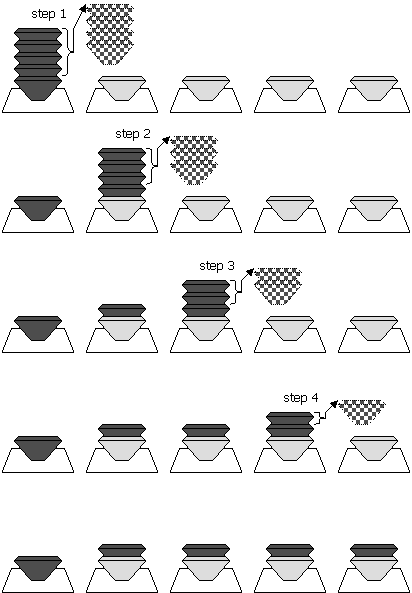
Here's another example:
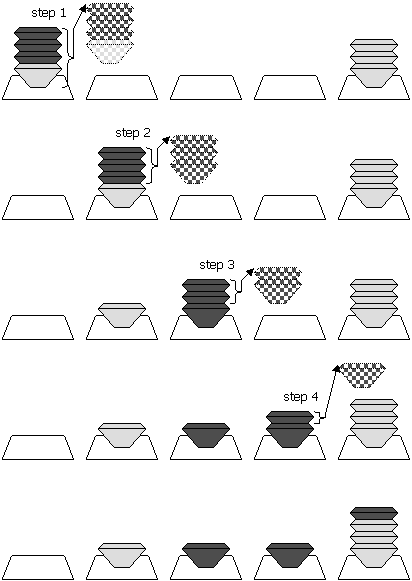
In this case, an opponent's piece was released in the course of the turn (on the second step).
Here's an example of leaving more than one piece behind on a step:
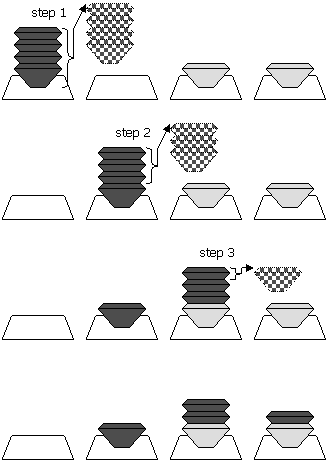
Leaving more than one piece behind is a way to avoid releasing previously captured pieces:
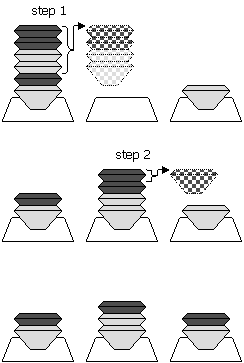
When you make a multi-step turn, on each step you move pieces to a space connected to the previous space, forming a chain of connected spaces. (Remember that a turn may be made up of one, two, three, or four steps.) In the following examples of multi-step turns, the numbered arrows show the movement for each step in the turn.
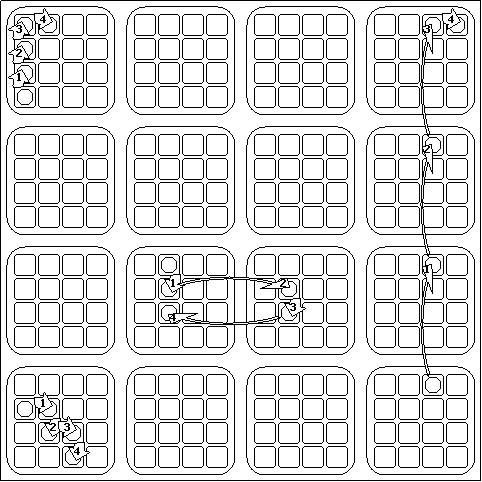
Remember that each step of a turn can go in a different direction, even back to a space from an earlier step.
